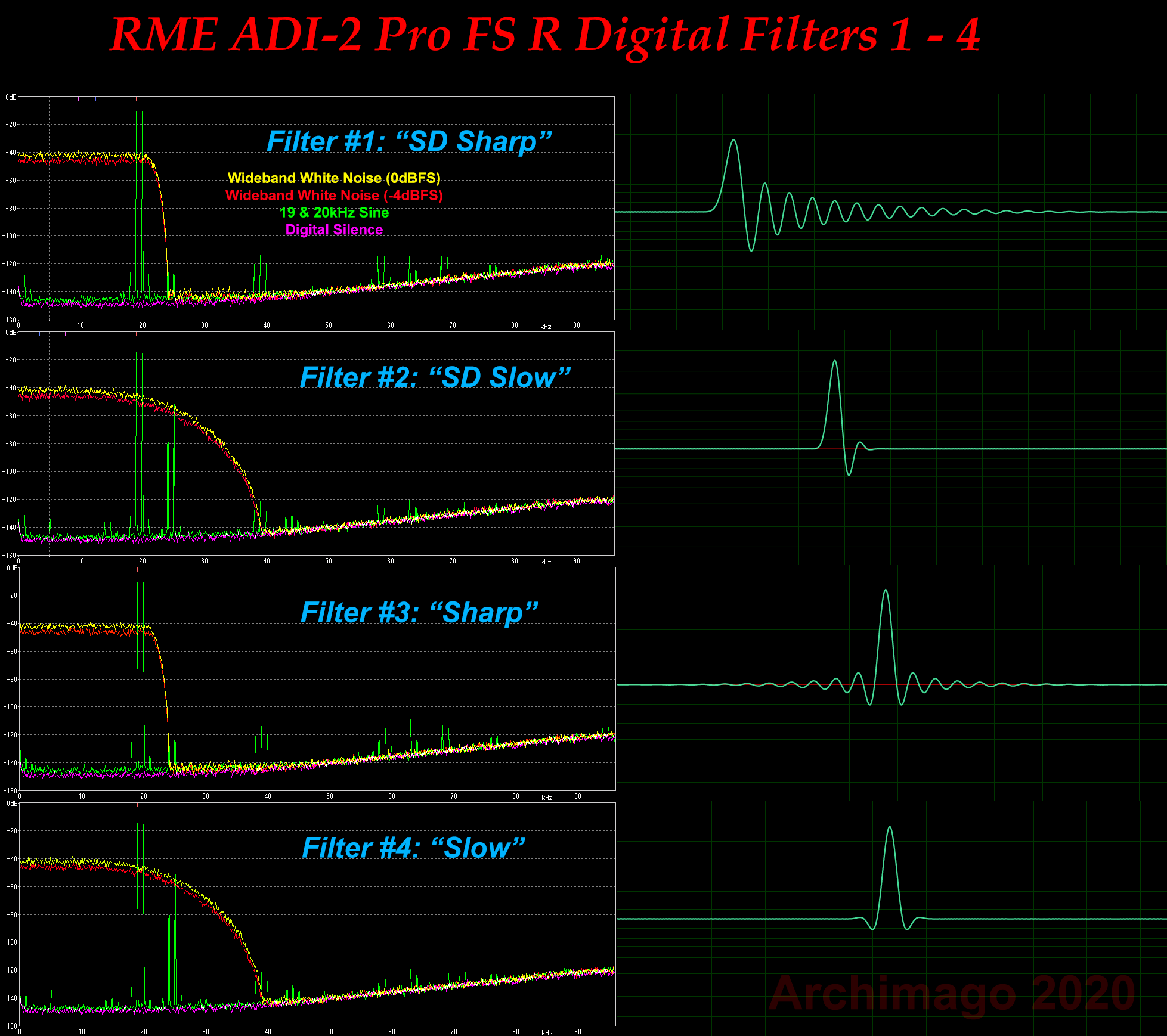Topic: What filter is your favorite and why?
Hi all,
I'm a new RME ADI-2 DAC owner and having a lot of fun experimenting with different settings. For the first few days, I settled on SD SLOW as my preferred filter. It made the mids sound beautiful and organic. However, I struggled with feeling like it made a lot different songs too similar and gave music a homogeneous quality. The SLOW filter exacerbated this quality and I felt like songs lost their dynamism. NOS gave the most beautiful vocal but otherwise sounded muddy and foggy to my ears.
I've since tried the SHARP filters and settled on SHARP (SD SHARP sounded like it compressed the soundstage). To my ears, SHARP gives music it's identity again and artists sound different from one another. Most music sounds great, though i get the occasional harsh treble on specific songs.
I know listening is subjective, and maybe no one else has this experience, but is there any kind of audio science behind why this might be the case?
I'm also curious as to what other's preferred filters are and why.
